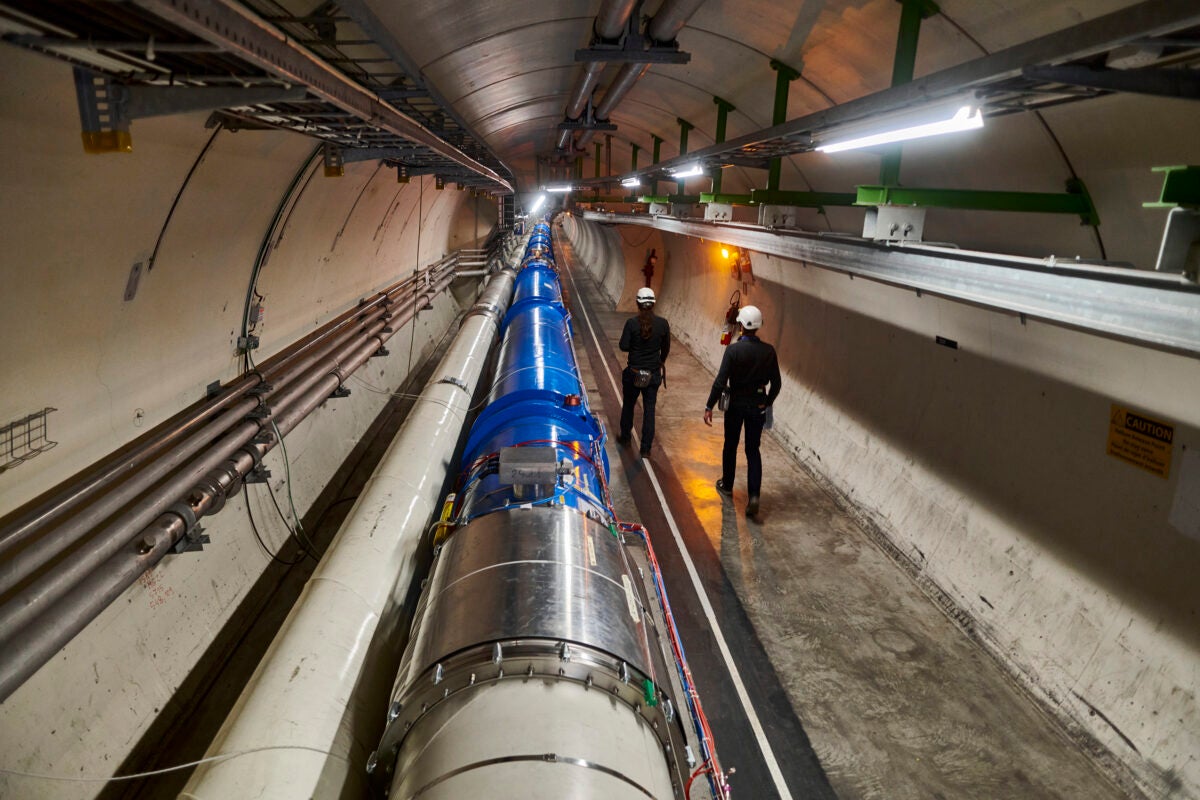The theoretical limit may be what is called the Planck temperature, derived using fundamental universal constants.

Workers walk past a section of magnets at CERN's Large Hadron Collider, where researchers are probing plasmas like those that filled the early universe. Credit: Samuel Joseph Hertzog/CERN
We all accept that the coldest temperature any object can reach is absolute zero. Is there a theoretical maximum temperature that anything can reach?
Esteban Kitterman
Thomasville, North Carolina
Temperature is a measure of the average energy of a set of particles (this is in contrast to kinetic energy, which is a measure of the energy carried by a single particle). Therefore, to answer a question about temperature, we need to find a set of particles to measure.
One of those collections is located at the core of our Sunwhere temperatures of about 15 million kelvins (27 million degrees Fahrenheit or 15 million degrees Celsius) are reached. Very massive stars can have core temperatures exceeding 500 million kelvins (900 million F or 500 million C). Just before a massive star explodes as a supernova, some theoretical models predict that its core may reach temperatures exceeding 100 billion kelvins in the implosion process, as it approaches the extremely high density of a neutron star.
Before the universe was even a second old, matter was a dense plasma of nucleons and elementary particles with densities greater than that of lead. We can predict the temperature of this plasma, Iin kelvins using the formula T = 1010/√t, where to is the time in seconds since the Big Bang. In 10 microseconds, the average temperature of the contents of the universe is 3 trillion kelvin, equivalent to the energies that the Large Hadron Collider probes in quark-gluon plasmas (about 300 million electron volts). But depending on how far back (i.e., closer in time to the Big Bang) you look, the temperature of the universe is about 1000 kelvins. the Big Bang) If you want to push it, you can get even higher temperatures.
The theoretical limit may be what is called the Planck temperature of 1032 kelvins, derived from the use of the fundamental constant of gravity (GRAM), The speed of light (C), Planck constant (I), and the Boltzmann constant (toThis is believed to be the limit where space and time break down due to the effects of quantum gravity and no more energy can be put into a system of particles without creating quantum black holes for the effort.
St. Odenwald
Senior Extension Coordinator, NASA HEAT Program, Kensington, Maryland








Leave feedback about this